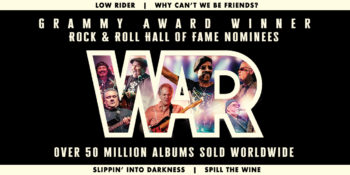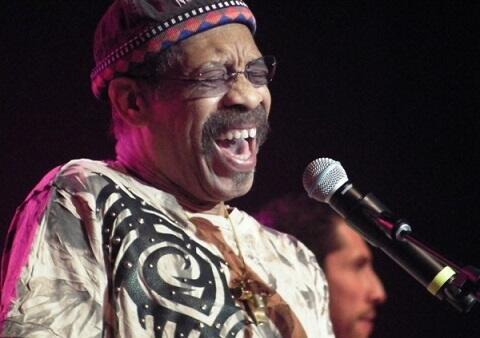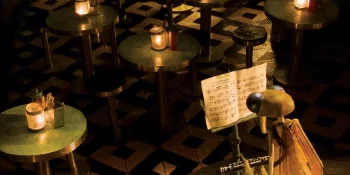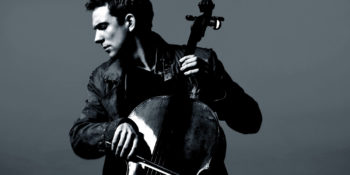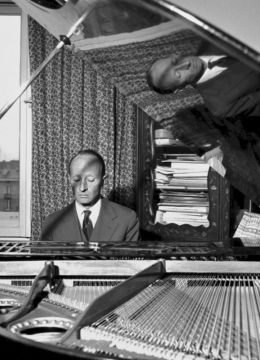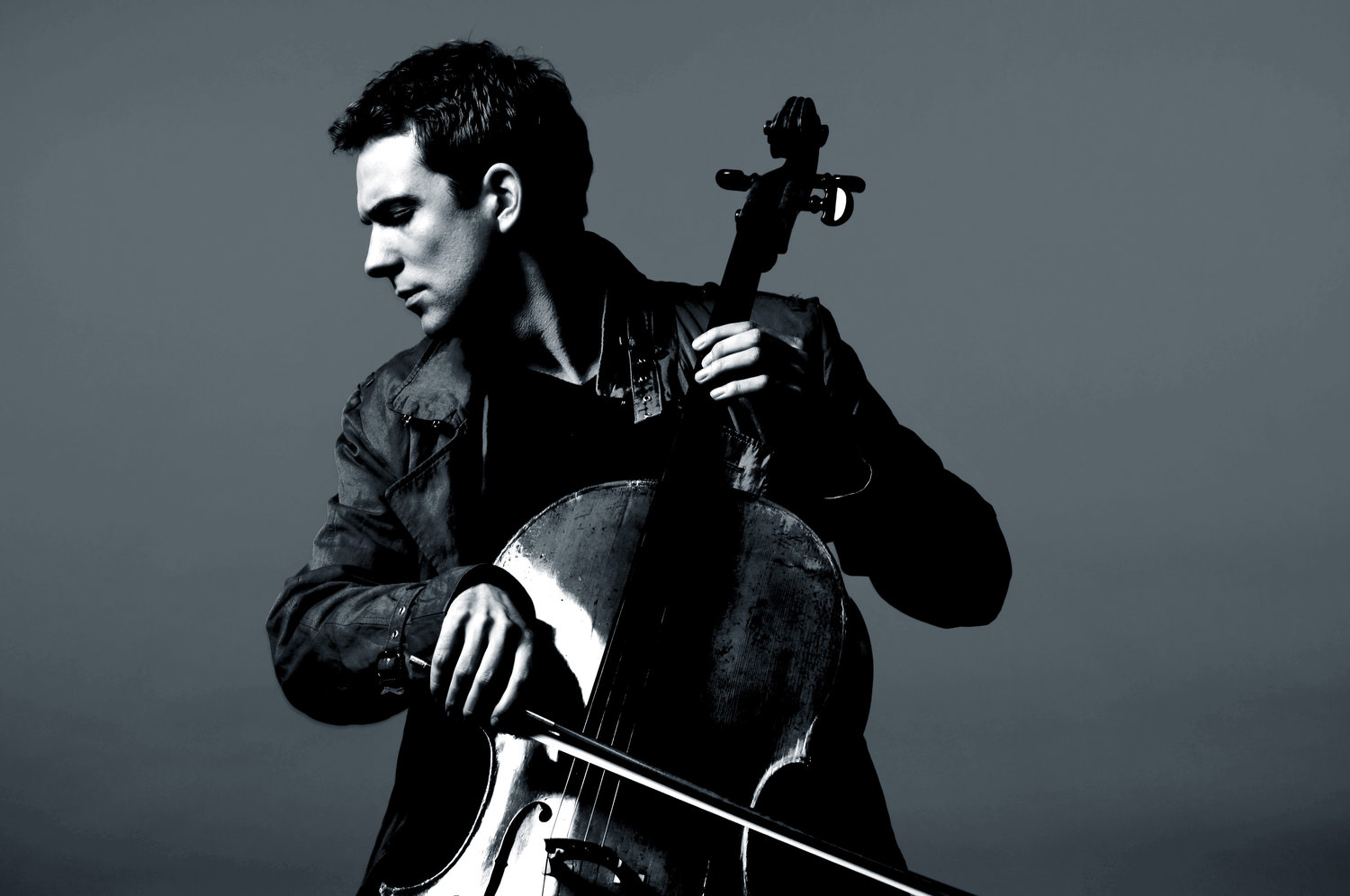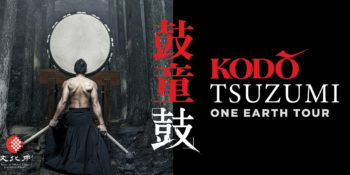The MCR Interview:
Interview with Karen Slack

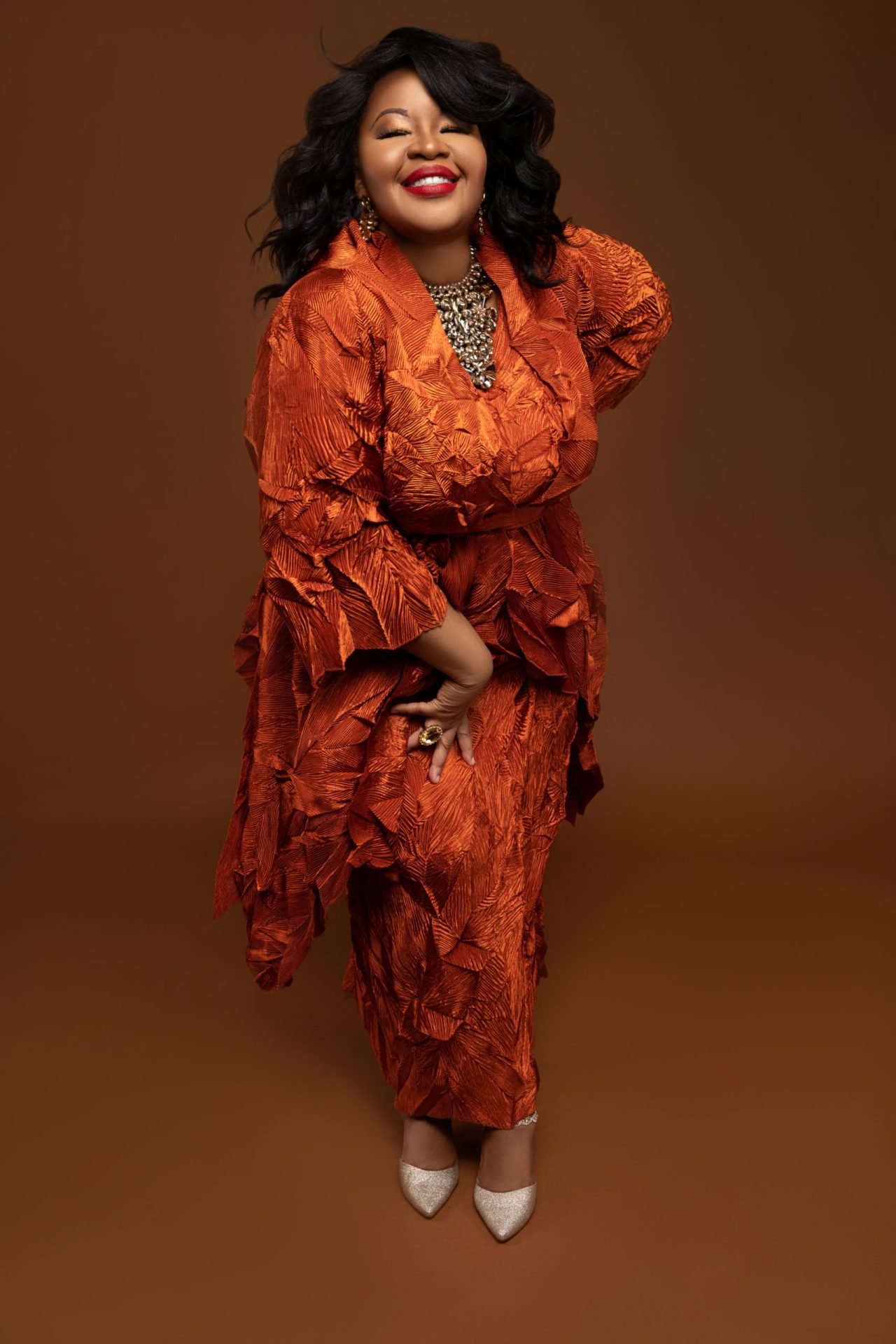 The Nashville Symphony will present a world premiere of composer Hannibal Lokumbe’s The Jonah People: A Legacy of Struggle and Triumph at Schermerhorn Symphony Center, 7 pm, April 13; 8 pm April 14–15; and 2 pm April 16.
The Nashville Symphony will present a world premiere of composer Hannibal Lokumbe’s The Jonah People: A Legacy of Struggle and Triumph at Schermerhorn Symphony Center, 7 pm, April 13; 8 pm April 14–15; and 2 pm April 16.
This work, the largest ever commissioned by the Symphony, is a metaphorical reference to Africans as Jonah in the belly of the whale, which is, in turn, a biblical reference to Jonah in the deepest hold of a ship trying to escape God’s commands. According to the Austin American-Statesmen, Lokumbe’s massive new work, which features nine soloists, over thirty actors, a full chorus and orchestra, a jazz quintet, and an African drumming and dance ensemble, will “chart slavery’s repercussions” and its legacy. “Jonah,” the composer’s largest-scale production to date, moves from fifteenth-century West Africa to the modern era; it is presented in four movements, called “veils.”
Representing Music City Review, I had the opportunity to connect with soprano Karen Slack [KS] about her featured role in this upcoming performance. Ms. Slack, a native of Philadelphia, has performed with some of the most renowned opera companies in the US, including New York’s Metropolitan Opera and the Lyric Opera of Chicago. She has also begun an international career with companies in Canada and Scotland. As a recitalist, she has performed such major works as Mendelssohn’s Elijah, Mahler’s Das Lied von der Erde, Barber’s Knoxville Summer 1915, and Schoenberg’s Gurrelieder. Following in the footsteps of her musical ancestors, Ms. Slack also features Negro spirituals as part of her programs.
This will not be her first performance in Nashville, having performed the role of Donna Anna in Mozart’s Don Giovanni with Nashville Opera in 2016. Her multifaceted career includes appearing as “Opera Diva” both onscreen and on the soundtrack for Tyler Perry’s film For Colored Girls, serving as artistic advisor for the Portland (OR) Opera, and hosting her own podcast, KikiKonversations.
The following interview, conducted via email, has been lightly edited.
Y Kendell [YK] Rather than using acts, Lokumbe divides his opera into what he calls “veils of understanding” that reveal differing stages of the African experience in America. Could you discuss your role in The Jonah People and its challenges?
KS: I have three roles in this work. Boukman’s Mother, Fatiman, and Susie. Each represents a woman who leads in her community and time period. I don’t see any challenges with performing them all in the same evening.
[NOTE: Dutty Boukman was an early leader of the 18th-century Haitian revolution; his mother was known as a literate Jamaican originally from Ghana; Cécile Fatiman, was a bi-racial priestess and also an important figure in the revolution; Susie Burgess Peterson was Lokumbe’s grandmother]
YK: You are appearing in two Lokumbe premieres in short order [May 13, 2023, the Oklahoma City Philharmonic presents the world premiere of Lokumbe’s Trials, Tears, Transcendence: The Journey of Clara Luper and the Nashville Symphony’s commission, The Jonah People]. How do the pieces and your roles in the pieces differ?
KS: The Jonah People is a theatrical presentation with a large cast of soloists, actors, and dancers. …The Clara Luper piece is a concert work for soprano, narrator, and orchestra that celebrates the life of the civil rights leader and pillar of the Oklahoma City community. The daughter of Ms. Luper acts as a narrator reading text to her mother who has passed away and I act as the [eternal] spirit of Ms. Luper. Very different works, but both have that Lokumbe sound that is incredible—uniquely Black and American, filled with jazz, highly emotional, and with beautiful harmonies.
YK: You have worked a number of premieres, yet you also perform masterpieces by a diversity of canonic composers—Mozart, Mendelssohn, Mahler, etc. and more avant-garde works by composers like Schoenberg. And you also sing a great number of American composers like Ricky Ian Gordon and Samuel Barber. What, in your opinion, is the state of the classical music canon by living American composers?
KS: It appears to be bursting on all sides. Every day I read of several orchestra, opera, and chamber music premieres, which is amazing – but we as an industry can do more to support composers, creatives, and performers. I proudly serve on the board of American Composers Orchestra because I know how important it is to support organizations whose mission is to give composers the opportunity to have their pieces come to life in live performance. As long as we allow American music to be what it is—which is a multitude of soundscapes and cultures—I believe it will continue to grow immensely.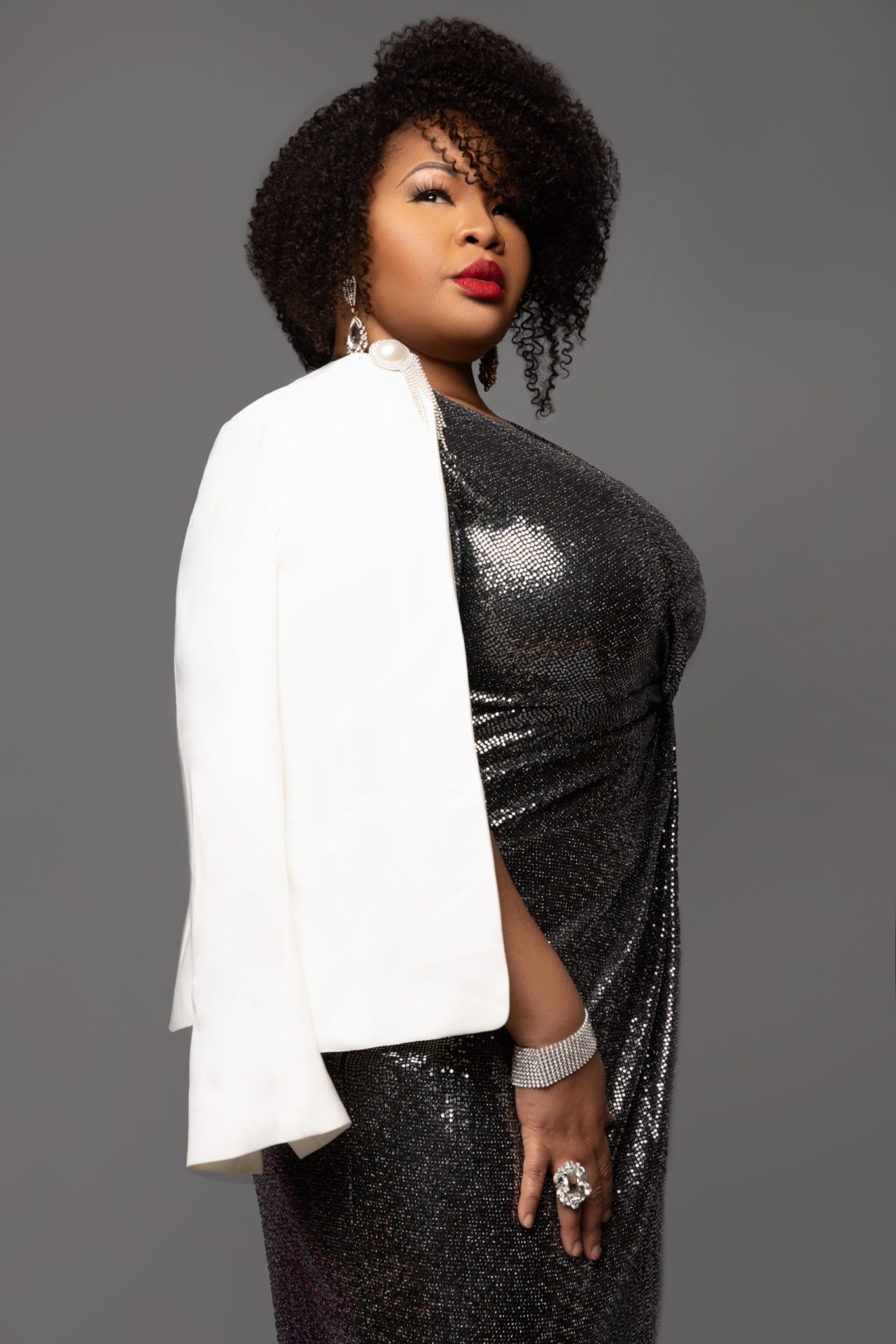
YK: Another question relating to American music, you often end your program with spirituals, following a long line of African American singers before you. What drives you to continue that tradition?
KS: Because I would not be who I am without my ancestors. It is my way to honor them for their sacrifice and celebrate the gift that they have given me, which is life. It is American music, I am an American, and it belongs everywhere from the church house to the concert halls. Plus they are magical to sing!!
YK: With respect to a national career, what advice do you have for aspiring musicians about performing in this medium
KS: Remember you are in service to this art form AND your audience. Lean into creating not only your own opportunities but your own art. In these post-pandemic times, it is becoming incredibly difficult to financially start and maintain a career in the way we’ve all been told it happens. So if you have the desire to create—and artists with whom you can collaborate and generate projects for yourself—DO IT! We don’t encourage that enough in classical music because many of us spend so much time alone striving for a soloist career.
YK: One thing that seems different about you is that in addition to a hectic performing scheduling of challenging pieces to learn and perform, you are actively involved in non-musical parts of your career, serving on boards; as Artistic Advisor for Portland Opera, performing with jazz trumpeter Terence Blanchard’s E Collective and Turtle Island Quartet. and, unusually, a podcast, KikiKonversations, where you often branch beyond the art and into the weeds of career development by talking to managers, music critics, and editors. How do you keep all those plates spinning in the air? And what do you value most about these off-stage activities?
KS: I am still trying to figure that out!! In this post-pandemic world, I’ve learned to say NO to things that don’t support my personal mission and goals. Saying yes to everything and everybody was weighing me down both mentally and emotionally. That’s partly because I get bored very easily if I am only able to focus on one thing at a time—but more importantly, it’s out of the desire to be more than JUST my voice. I constantly think about what I want my life to look like post-performing on stage, so I plant many seeds in my garden, nurturing and watering them, eager to see which ones blossom. That’s the way I like to view it. Being a podcaster, advocate, advisor, mentor, and board member; performing opera, chamber music, and recitals; and premiering new works by jazz legends like Terence Blanchard and Hannibal Lokumbe (both of whom have embraced and supported me greatly) are all in the same garden!
YK: The composer intends that this groundbreaking performance, including the roles played by the artist he affectionately calls “Sister Karen,” will lead the audience to “come as you are, leave transformed.”
The commission was supported by the Nashville Symphony in collaboration with: NEA, Ingram Charities, RH Boyd, Nissan, Advance Financial, Belmont University, Vanderbilt Medical Center, Naxos, Pinnacle Financial, Brown Brothers Harriman, and Earl Swenson Associates.
From the Gateway Chamber Orchestra
Hispanic Lent with La Pasión Según San Marcos
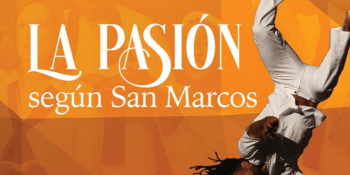
A dust cloud arises above the ground gradually revealing an uncertain phenomenon. The more it becomes visible, the stronger is the instinct that something startling is about to happen. Is it an announcement? Will it be for an instant or will it last forever?
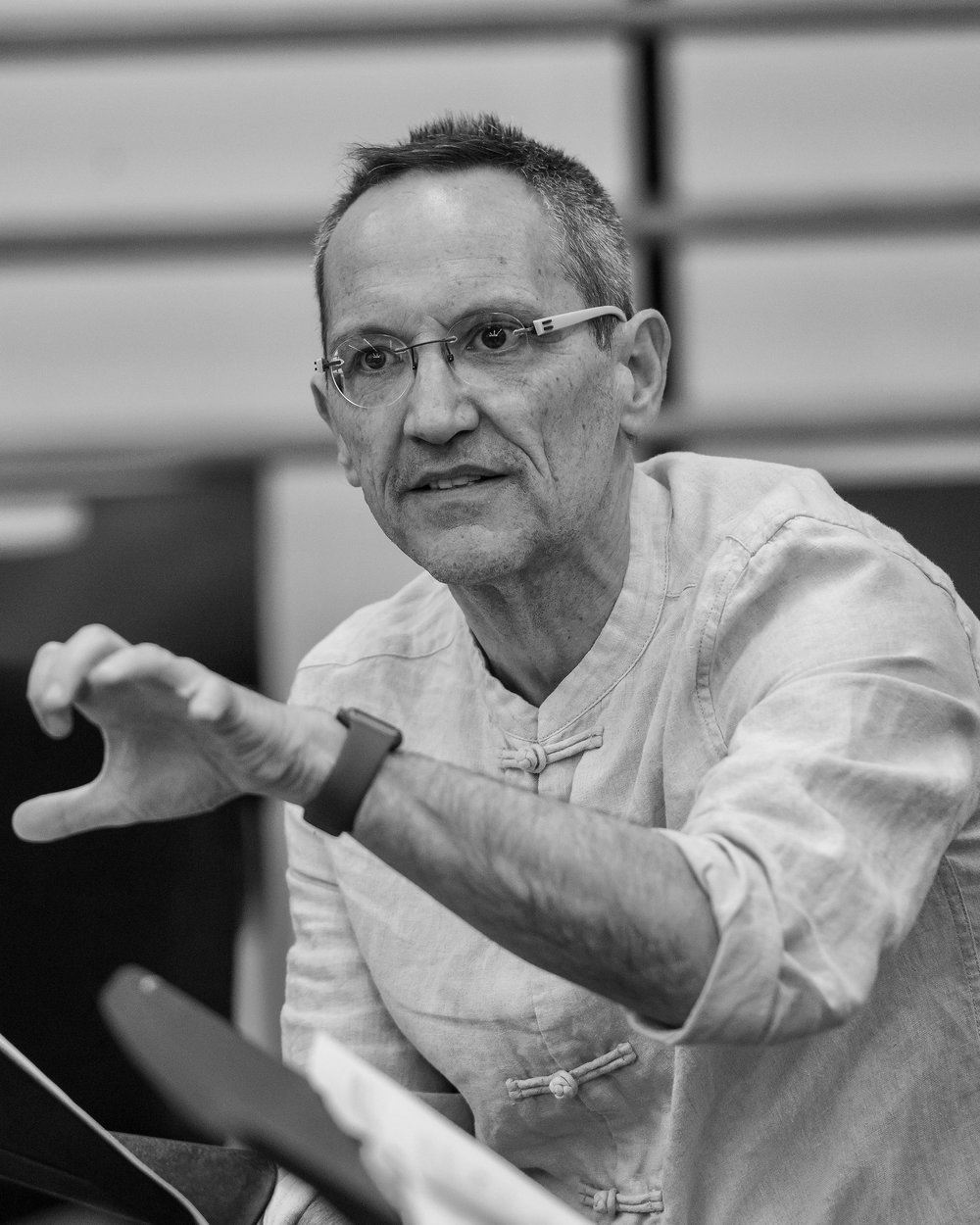
The unusual orchestration of La Pasión Según San Marcos, a superb work by the Argentinian maestro Osvaldo Golijov, hints of an expectation of a revelation. A light sheet unfolds into two fixed notes that alternate between the strings, while the berimbau and the bombo direct a prolonged crescendo that allows us to see the brass shine. Finally the melody of the trumpets takes off in a statement that echoes amidst the stirring of the shaker seeds.
At the moment when Jesus ascends from the water in the baptismal rite, God manifests himself through the Holy Spirit: “This is my beloved Son, in whom I am well pleased”. This event confirms the mission of the Atonement for mankind, and it is also the verse that Golijov chose to begin his dynamic narrative of La Pasión.
The setting of the composition and the performance of this musical work, makes visible the different migrant realities in the world. Jesus who had to flee to Egypt to avoid being assassinated, the African community that settled in America at the time of slavery, and the composer, a descendant of a Jewish family that took refuge in Argentina because of war. The masterful performance that the Gateway Orchestra gave on March 18 and 19 under the conducting of Gregory Wolynec at the Austin Peay State University’s Mabry Concert Hall (Clarksville) included an extraordinary guest cast from different nationalities. The scenography sound of the Atlantic rhythms, was recreated by the artists Reynaldo González Fernández (Cuba), Mikael Ringquist (Sweden) and Marcus Santos (Brazil). This trio has served as the axis in the staging of La Pasión with different orchestras around the world. Ringquist, who specialized in the batá drums of Yoruba culture, collaborated in the creation of the percussion lines on Golijov’s own composition. Continuing the multiculturalism of the event, the Spanish-speaking spectators were reacquainted with their native sounds while they were holding a concert program in Spanish.
The expression of Jeremiah lamenting the destruction of Jerusalem in the artistic work of the painter Rembrandt, was the inspiration that Golijov needed to take on the musical setting of a biblical text. Both artists share the reality of materializing religious passages alien to their own beliefs. However, in the suffering of Jesus, Golijov saw the pain, the anguish, and also the resistance of the Latin American people due to the lurid political persecution of their governments. This is why the libretto is mostly written in colloquial language and the dialogues move from speaker to speaker in each movement. In Agonía, an Aria of Jesus, the conversation with God and with his disciples is performed by an alto and the female voices of the choir, in a heartfelt lullaby supported by the lament of an accordion. Displaying a color of a bandoneon, together with the suggestive darkness of the low strings, The Garden of Getsemaní gives off an aroma of tango. For Golijov, the strongest representation of Jesus in Latin America is embodied in women. Their peaceful and consistent protest brings the composer’s memory to the images of the Plaza de Mayo, a place in which the clamor of the mothers for the disappeared was gathered in Argentina.
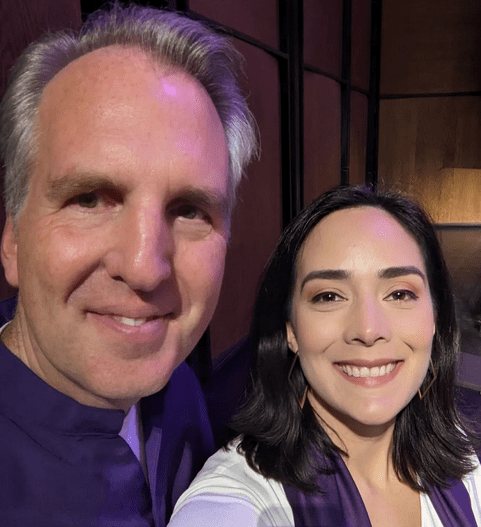
Another of the great attractions in the composition was the different musical genre selection that gave life to each of La Pasión episodes. The voices in the choir are technically adapted to each style, making it possible to recognize the timbre colors of the different races. In Primer Anuncio, the “cantadoras” congregate. These are women who in the Caribbean and Pacific coasts announce events and tell stories. The incrimination in Judas, finds the perfect ground in the Cuban song that is characterized by exclaiming openly and sparing no details. Judas responds with an internal reflection in the dramatic language of flamenco, a genre that singles out first-person narration. In this range of tunes, the mezzo-soprano Luisana Rivas (Venezuela) exploited her versatility in lyrical and art-song performing, and the soprano Penelope Shumate (USA), recognized for her clear and brilliant sound, brought the oratorio back to the Old World.
With an ensemble dressed entirely in white and adorned with a purple sash -the tonality of the typical costumes of the littoral and the representation of pain and penance in the Christian liturgy, respectively – dance and art drama also converge in La Pasión. Choir members converse with each other and congregate to emphasize a message. The dancer Paciência, alternating between the berimbau and the martial arts, combined the gestures of capoeira with the acted script of the work.
La Pasión contains an immeasurable symbolism; interrelates roots, religions and times. However, in the words of the composer, the orchestration would not have nuances, the contrast between the rhythm and the chant would be succinct, and it should be structured in the form of a Cross.
At the Andrew Johnson Theater in TPAC:
The Curious Incident of the Dog in the Night-Time
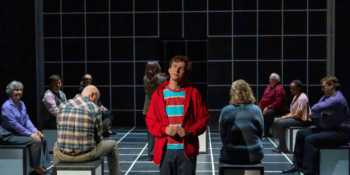
I was excited to see this play. I read Mark Haddon’s book, The Curious Incident of the Dog in the Night-Time in high school, and really enjoyed it. It is funny, kind, and optimistic, despite the protagonist’s difficult life. Christopher is a 15 year old who has
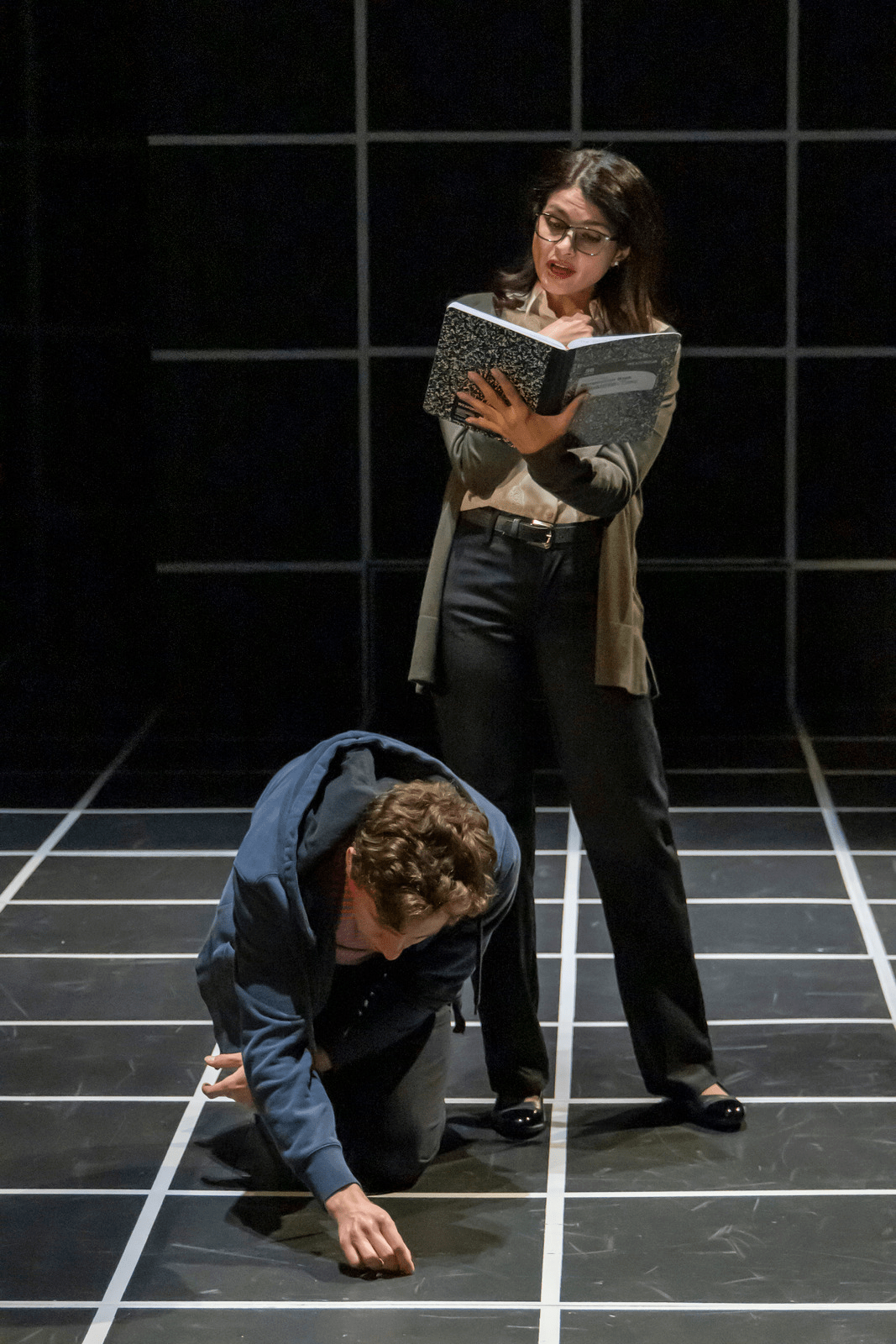
some sort of Autism Spectrum Disorder (ASD), although neither the book or the play get specific about it. To quote the
director, Micah-Shane Brewer, “…This is not a play about ASD. This is a play about Christopher.” And Christopher is a delightful character. The book is written from his perspective, as a project and part of his mission to discover who killed his neighbor’s dog. This endeavor digs up more pain and joy than anyone expects. As an outsider to “normal” people’s behavior, his observations are hilarious. It’s a rare combination of being relatable while making us laugh at ourselves. We all relate to what it feels like to be an outsider, and it is fun to laugh at ourselves and the “normal” things we do that we don’t really think about. I was curious– how could this delightful viewpoint transfer to a play?
The adaptation, done by Simon Stephens, does it quite well. Christopher’s teacher, Siobhan, played by Sejal Mehta, reads sections of his book aloud, sometimes as simple narration, sometimes in scenes while they interact, allowing for her comments and questions. This way we can get Christopher’s funny observations and explanations without him having to give excessive asides or otherwise slow scenes down. The play is excellently paced. The only moments I disliked in the adaptation were a few brief meta-references to the play itself. I think they were in the spirit of the book, but meta-references in a book, when the main character is supposedly the author, retain an authentic feeling that a play cannot emulate in the same way.
I saw the play opening night in TPAC’s Andrew Johnson Theater, which I hadn’t realized existed before because it’s in the basement. It’s a black box theater, and despite the ominous low-ceilinged entrance, it is quite a good theater. The seats are comfortable, the view is good, and the air-conditioning actually works. The set is a floor and backdrop of black with a grid taped over it, like graph paper. There are no additional backdrops or sets. A projector is used, shining on the back wall. It is used well, to assist with images as used in the book, or in showcasing the crazy ads and confusion of English train stations. It avoids overuse or dependence. Besides a few small, carried items, the only props are square boxes that are moved around the set to become chairs or train platforms or whatever else is needed. Any potential confusion that could take place between rapid scene changes is avoided through adept and smooth lighting, designed by Darren Levin.

Ben Friesen, who played Christopher Boone, does a marvelous job. He is likable and brings out the charm and innocence of his character. He shows social awkwardness and other behavior associated with the autism spectrum with respect and humor. Since the entire story is focused on Christopher, the person cast in that role makes or breaks the play. Ben Friesen makes the play. [photo of Ben Friesen, Nat McIntyre, Lauren Berst, 2.png]
Nat McIntyre and Lauren Berst play Christopher’s mother and father, and successfully and empathetically show their characters’ flaws and strengths. Their roles involve a lot of conflict and confusion over how to care for their child, and their portrayal provokes thought.
Many members of the cast play multiple roles, but the skilled costuming and acting avoids any confusion. Everyone has comedic timing and moves swiftly and cleanly through busy choreographed scenes in simulation of train stations and frantic rushes.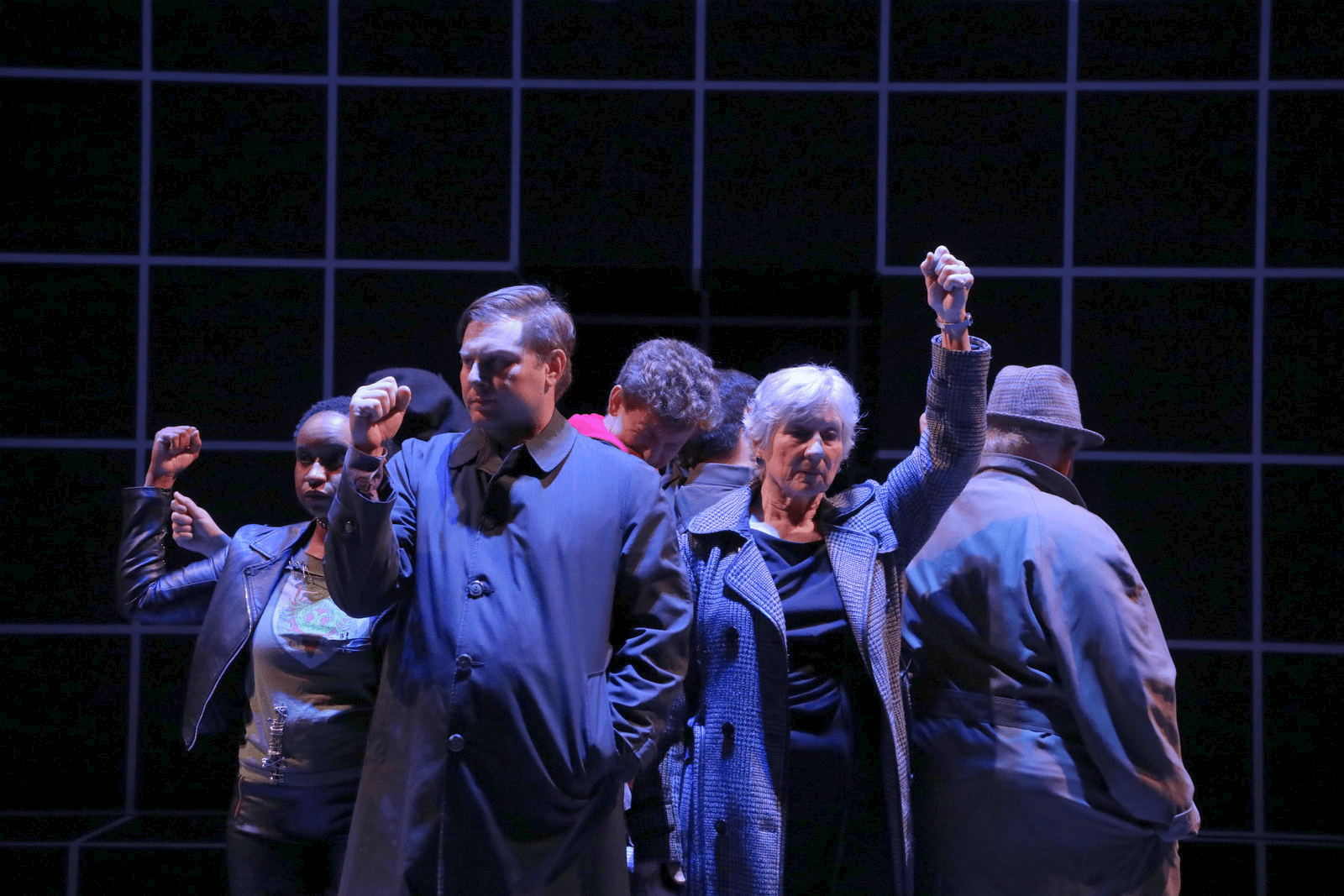
The play is set in England, and Katie Cunningham as Dialect Coach made sure everyone’s accents sounded plausible and consistent, saving the play from any potential cockney enthusiast.
The Fight Choreographer is Eric D. Pasto-Crosby. The few moments of physical conflict are tense and feel real.
The audience laughed at every joke and grew quiet and tense at all the right moments. A lot of the humor is in the dialogue and narration, but there are excellent moments of social awkwardness or, in one particular moment, childish humor, when a rat dressed in a space suit bobs around the stage. All the conversations I heard during intermission were of cheerful enjoyment. After the play ended, we had to make our crowded way out of the theater, through the small lobby, to wait at the elevators in a low-ceilinged area, and then cram in like sardines. I did not enjoy this uncomfortable departure and I thought it was rather funny that, after watching Christopher Boone struggle in crowds, we now had to as well.
You should see this play. It’s of that rare type of fiction which you enjoy with ease, allowed to laugh at normalcy without cynicism, and which makes you resolve to be a better, more empathetic person. I tried to choose my favorite part about this play and performance, but I couldn’t. Every part of it went so well together, each actor in their role, every bit of choreography, the timing of the lighting and projector and sound effects, the way they drew the audience in so successfully. The Nashville Repertory Theatre chose an excellent play and performed it with heart.
The Nashville Repertory Theatre is performing the Curious Incident of the Dog in the Night-Time at TPAC, March 24-April 2. For tickets and more information about the show, click here: https://nashvillerep.org/curiousincident
Coming to the Nashville Repertory Theatre
Curious Incident of the Dog in the Night-Time Preview

“I first saw The Curious Incident of the Dog in the Night-Time in a large theatre in its original Broadway run in 2015,” says Executive Director Drew Ogle. “I immediately thought it was great, but wouldn’t it be amazing in a more intimate space, where the audience can experience the journey right alongside Christopher? I’m thrilled that Nashville Rep’s production is going to do just that. Even audiences familiar with the show will have a new, unique experience.”
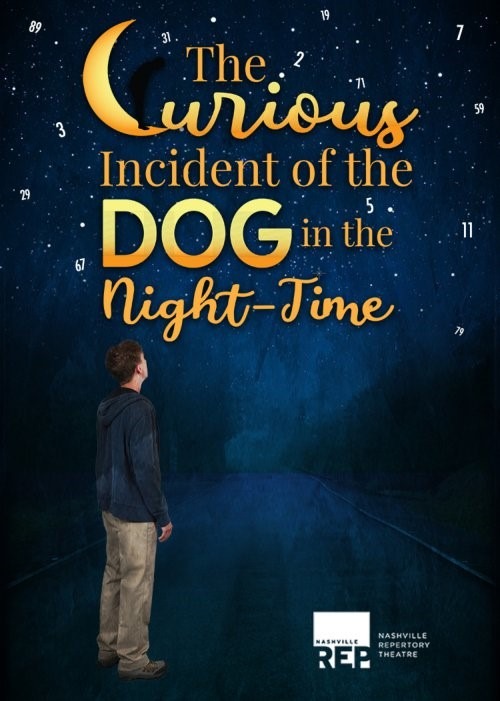
The Curious Incident of the Dog in the Night-Time is adapted by Simon Stephens from Mark Haddon’s bestselling novel. The story follows Christopher, a neurodivergent teen on a quest to solve the mystery of a neighbor’s dog’s death while navigating his complex relationships with his family and community. His unique perspective on the world creates challenges that he must overcome in order to uncover the truth, and in doing so, he discovers more about himself and the world around him.
“At the heart of the play is a story about understanding others and overcoming fears,” says Micah-Shane Brewer, Nashville Repertory Theatre’s new Artistic Director. “The character of Christopher sees the world in a different and special way, unlike anyone else around him.”
Nashville Repertory Theatre is performing The Curious Incident of the Dog in the Night-Time Friday March 24 through Sunday April 2 at TPAC’s Andrew Johnson Theater. For ticket and showtime information, visit www.nashvillerep.org.
A Chamber Music Series Concert Presented by Members of the Nashville Symphony
Modern Masterpieces for Brass
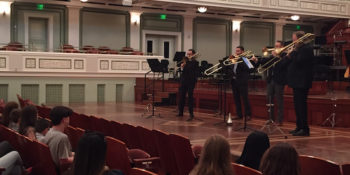
Select members of the Nashville Symphony presented ‘Modern Masterpieces for Brass’ at Schermerhorn Symphony Center on Wednesday, March 8, 6:00 p.m. This free event was offered as part of the Chamber Music Series and featured the following Nashville Symphony musicians:
Alec Blazek, trumpet
William Leathers, trumpet
Patrick Walle, horn
Paul Jenkins, trombone
Gilbert Long, tuba
Audience members were asked to sit in the center orchestra section nearest the stage as space allowed. On stage were chairs, stands, and percussion equipment that remained from an earlier rehearsal; however, the front part of the stage was lowered and cleared, except for a closed quintet seating schematic. A lighting plot brought additional focus to what would become the performance area.
Phillip Ducreay, Education and Community Engagement Program Manager, opened the concert by welcoming attendees and previewing upcoming performances by the Nashville Symphony. Even though it is understood that the Chamber Music Series falls within Ducreay’s purview, this commercial for future subscriptions and ticket sales seemed to somewhat distract from the music about to be offered – perhaps that was the price of admission to this free performance.
Of this series, the Nashville Symphony suggests the following on the organization’s website:
The Nashville Symphony Chamber Music Series provides an informal and interactive concert-going experience. With programming developed by members of the orchestra, this FREE evening of music and conversation is a wonderful way to get to your Nashville Symphony musicians and explore the history and artistry behind the music.
The intent behind such a series is commended and very much appreciated. I am not convinced that the aim of this series is being fully realized, or that such an ambitious endeavor is possible within a sixty-minute timetable. What made this concert informal – a slightly earlier downbeat, musicians wearing all black instead of concert black, general seating? A handful of audience members asking questions of the musicians didn’t seem like much of a conversation, although the audience was learning a few personal facts about the musicians during this portion of the event. Surely there is more that could be done if an objective is to actually, “. . . get to [our] Nashville Symphony musicians.” The ensemble entered from backstage, performed, and left, never once breaking the proscenium.
While the format and its execution of this performance may leave questions, the artistry did not. Works written by five living composers were featured:
Jennifer Higdon
Fanfare Quintet (2002)
David Sampson
Morning Music (1982)
Caleb Hudson
White Rose Energy (2016)
Kenneth Amis
Bell Tone’s Ring (1999)
Eric Ewazen
Colchester Fantasy (1987)
The program offered a broad emotional landscape and hinted at the awesome power of the medium to serve as a mirror for societal, political, and religious victories and shortcomings alike. This narrative of awareness was introduced on the printed program, too, with the following acknowledgement:
We acknowledge that Greater Nashville was originally home to the Yuchi people, the Shawnee people, and the Eastern Cherokee people, who lived on this land for thousands of years and countless generations before they were forcibly moved by colonization and the government. We would like to emphasize that despite this history, there are still members of these communities that live in Nashville today. The legacy of the enslaved individuals who helped build the city and the neighborhood we know today is also not forgotten. We recognize their strength and resilience through colonialism, white supremacy, and detrimental policies. To directly make an impact, we recommend that you donate to the Native American Indian Association of Tennessee at naiatn.org/donate.
This acknowledgement took up a quarter of the printed program, but it was never directly referenced. It is undecided whether this strengthens the gesture or offers the position, however rightly justified, similarly to an act of performative governance.
Of the works performed, David Sampson’s Morning Music left quite an imprint. Trumpeter Alec Blazek was the first member of the ensemble to address the audience and introduce a piece on the program – perhaps fitting as it was later acknowledged that the success of the concert owned much to Blazek’s administrative acumen of behalf of the group. Sampson writes the following about his piece:
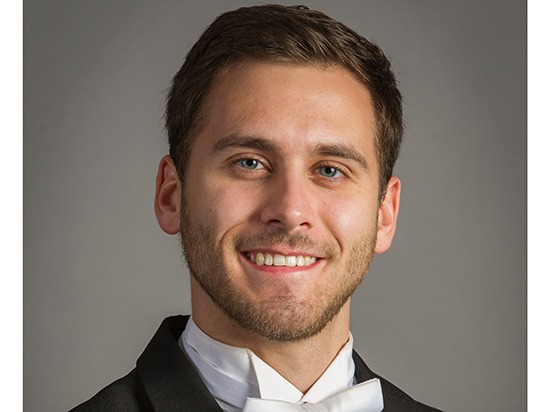
Morning Music for brass quintet was written during the summer of 1986 for the American Brass Quintet. It is a sequel to a previous work of mine titled In Memoriam: W.E.S. for woodwind quintet written in 1981 and premiered by the Dorian Wind Quintet. The subject of that piece was the murder of my brother, William Evan Sampson, by the Ku Klux Klan and American Nazis in 1979. Morning Music deals with my thoughts and feelings seven years later. As you will hear, the anguish over the death is as intense as ever, but strength and hope will gradually emerge from the despair. The work is one movement with clearly delineated sections ending with a fast-paced coda. I have dedicated Morning Music to my mother, Betty Sampson, whose optimism and resiliency have been an inspiration to me.
Each section of the work was expertly navigated by the ensemble. Hocketed intricacies throughout showcased impressive musicianship. The work opens with complex intervallic sequences written, at first, for solo tuba, that proved to be tamed by Gilbert Long. William Leathers, who played Trumpet 2 for this selection, aligned magically with trombonist Paul Jenkins in moments of repose. Leathers’ driving articulated pulsations in contrasting sections confronted the unimageable horrors through which the composer must have been attempting to deal with the unnecessary loss of his brother.
The contributions of Patrick Walle must not be overlooked. The horn was asked at times to battle a pair of trumpets, to extend the range of the trombone, and to make epic declarations as horns have been accustomed to do, among other feats, all within only just this one piece. There were moments when Walle’s placement within the seating schematic appeared to swallow his contributions more than was desired. I would be curious to hear another performance of Morning Music with Walle’s bell directed more towards the audience.
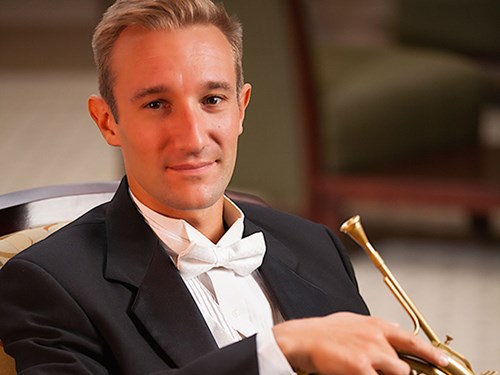
The composite of such an ensemble presumably should be greater than its parts. That proved true for this ensemble, but Alec Blazek’s trumpet playing needs recognized for being equally intoxicating and transporting. Blazek’s clear tone, nuanced articulation, and musicality can camouflage itself when serving in a supportive role, as well as lead style when charged to do so by the score. A perfect example of this dichotomy of role was highlighted by an ostinato figure that began a new section of David Sampson’s Morning Music. Blazek introduced the figure with authority before providing space in the sonic landscape for other voices within the ensemble to continue to develop the work’s texture.
Before the accelerating coda, which brings Morning Music to its conclusion, one musician had technical difficulties with their foot pedal; this pedal is used in tandem with an electronic tablet to advance one’s in place in a piece instead of using physical copies of music. I don’t reference this moment to embarrass the group, but rather to praise their professionalism and seemingly calm demeanor. Whether it was a malfunction or a Bluetooth connectivity issue, the music took a slightly extended pause, after which a discreet gesture was given by the affected musician to proceed to the next group entrance. Without fail all five musicians resumed and finished with a continued conviction.
Many successes could be cited from the other four pieces on the program and the surprise encore. For an ensemble that operates in an ad hoc capacity, it might be expected for there to be a lack of flexibility or cohesion, but this performance suggests quite the opposite. The approach to playing was similarly appreciated. The audience wasn’t met with five orchestral jocks playing at chamber music. The offerings were elevated and paced. I hope that Nashville realizes how fortunate it is to host a music organization of this caliber. Better yet, I hope that Nashville will support this musical organization and show that it is both appreciative and deserving of its artistry.
The Nashville Repertoiry in Polk Theater
August Wilson’s Fences
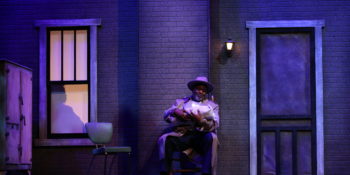
I was unfamiliar with this play before seeing the Nashville Repertory Theatre perform it on opening night in TPAC’s Polk Theater, and I deliberately avoided reading about it beforehand to avoid academically-granted spoilers. After seeing it I was disappointed and confused at why I was forced to read the humorless and grindingly depressing Death of a Salesman in high school when I could have read this masterpiece. I’m not unique in being blown away by the quality of this play; it won the 1987 Pulitzer Prize for Drama and the 1987 Tony Award for Best Play, with James Earl Jones in the lead role. More recently there was a 2016 film adaptation of the play starring Denzel Washington and Viola Davis.
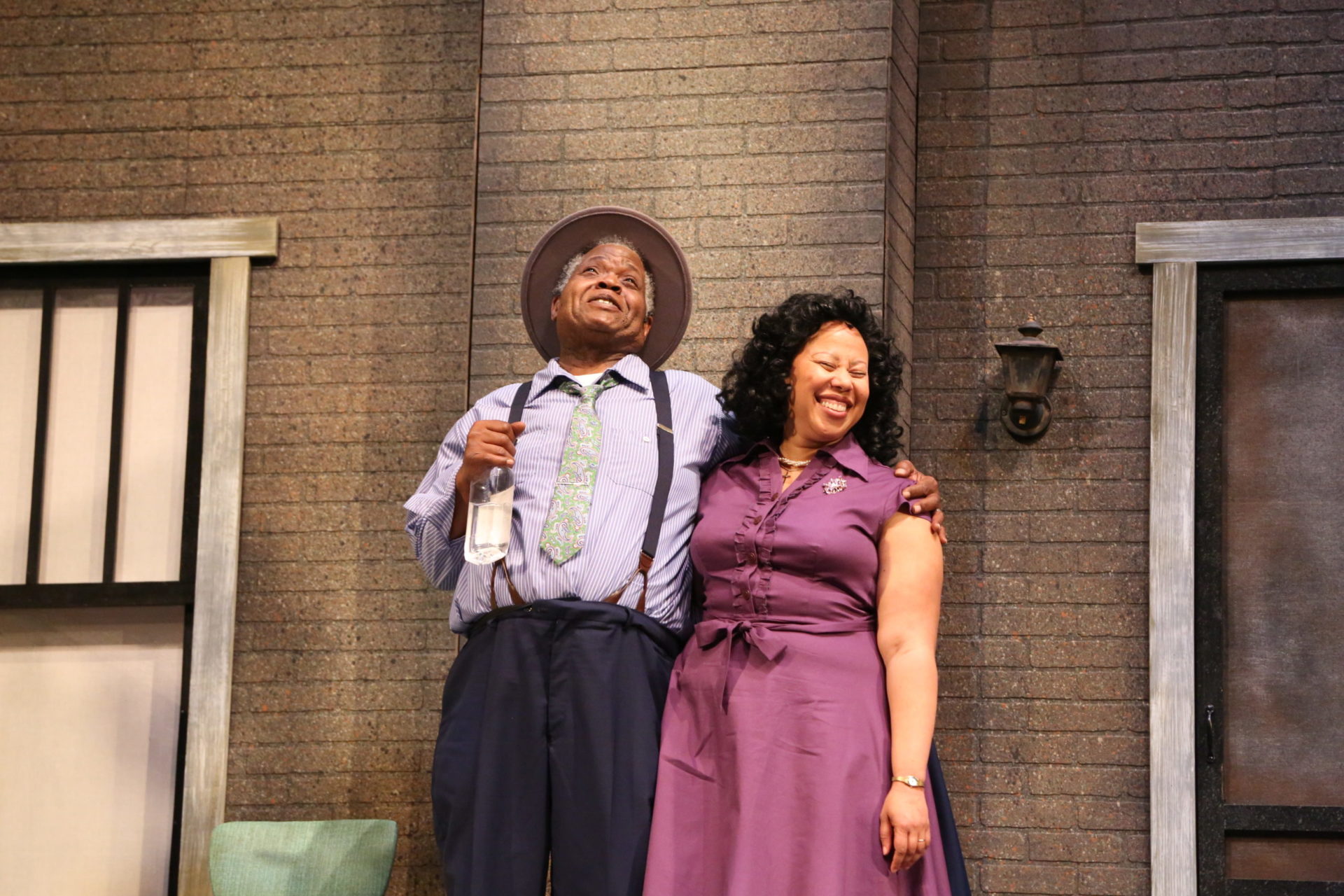
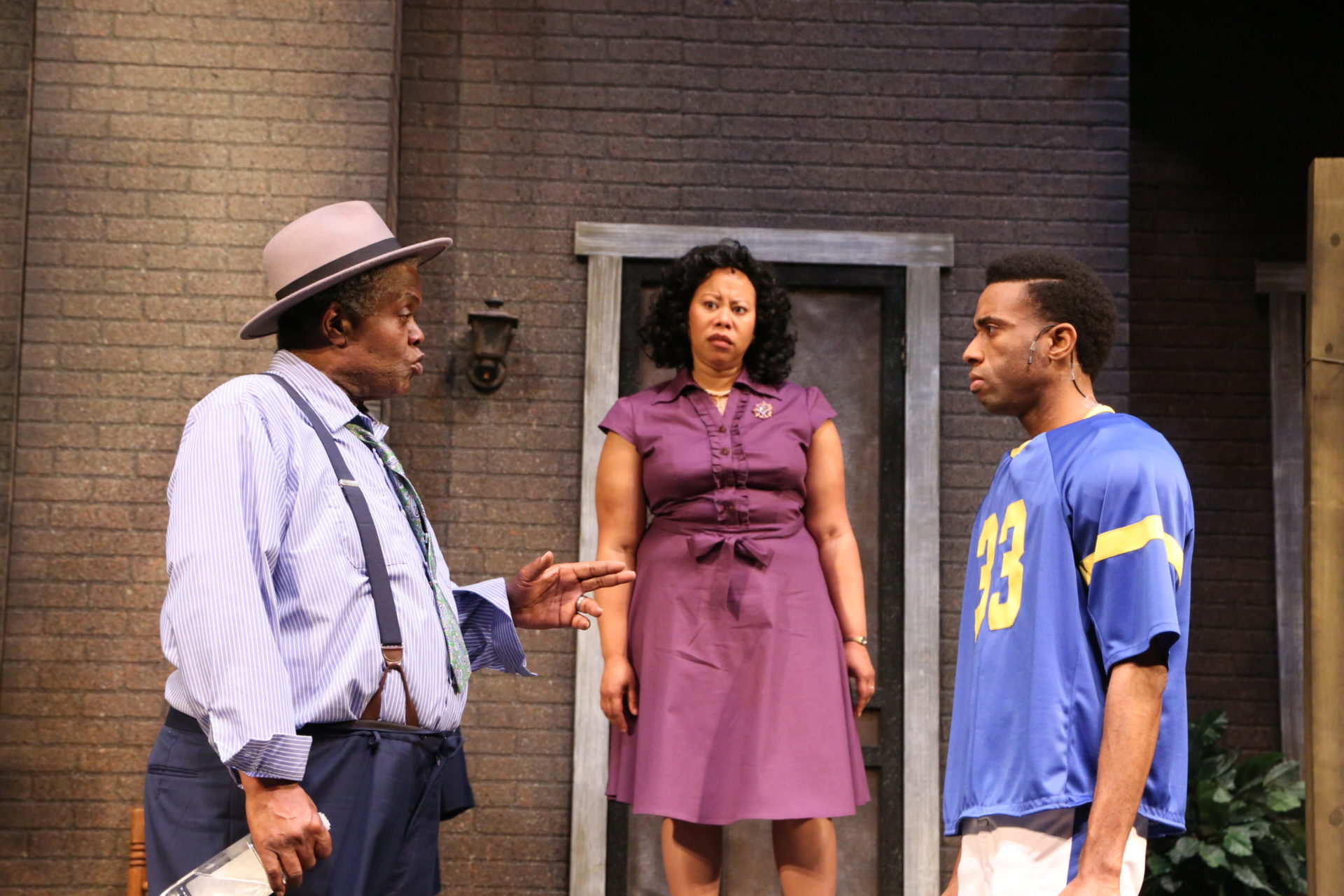
Fences deals with failure, change, aging, selfishness, forgiveness, racial discrimination, love, poverty, and pretty much everything else the human condition has to offer. It is excellent on every level. The dialogue is marvelous, the language, rhythm and tangents of the conversation are realistic. Each character is multidimensional and shown compassionately and often given a chance to explain their choices, the good and the bad. Some of them learn from their mistakes, others do not. The metaphors in this play –one being notably the fence that gives the play its name– are deep and multifaceted do not require ambiguity in order to fake profundity. The play is real, hilarious, empathetic, sad, and hopeful.
The play is set in the 1950’s. Troy Maxson is a garbageman who was a star baseball player in the Negro leagues before WWII. He’s married and has a teenage son. Frequent visitors to their yard are his co-worker friend, another son from an earlier relationship, and his brain-damaged war veteran brother. I won’t outline the plot because simply listing the events doesn’t give you the full story any more than a resume sums up your life. Troy is a father, a husband, and a friend. He is flawed and makes mistakes, big and small, and we see how these and his virtues combine with the flaws and virtues of others in his life, shaping their options and choices. For all his lectures to his son Cory about how he’s done his best for them as the provider, it turns out that their house was paid for by money that his brother received from the military after getting injured in combat. There is conflict between him and Cory, a football player with a college recruiter interested in him. Troy is still bitter about how racism prevented him from being able to play in the Major Leagues and tells Cory that there’s no point in playing sports; he should get a trade in something practical. Cory tells him that times are different now. It’s not just about football; this would be a path for him to go to college. Troy’s failure to see things differently, despite his wife Rose’s best efforts, was compelling.
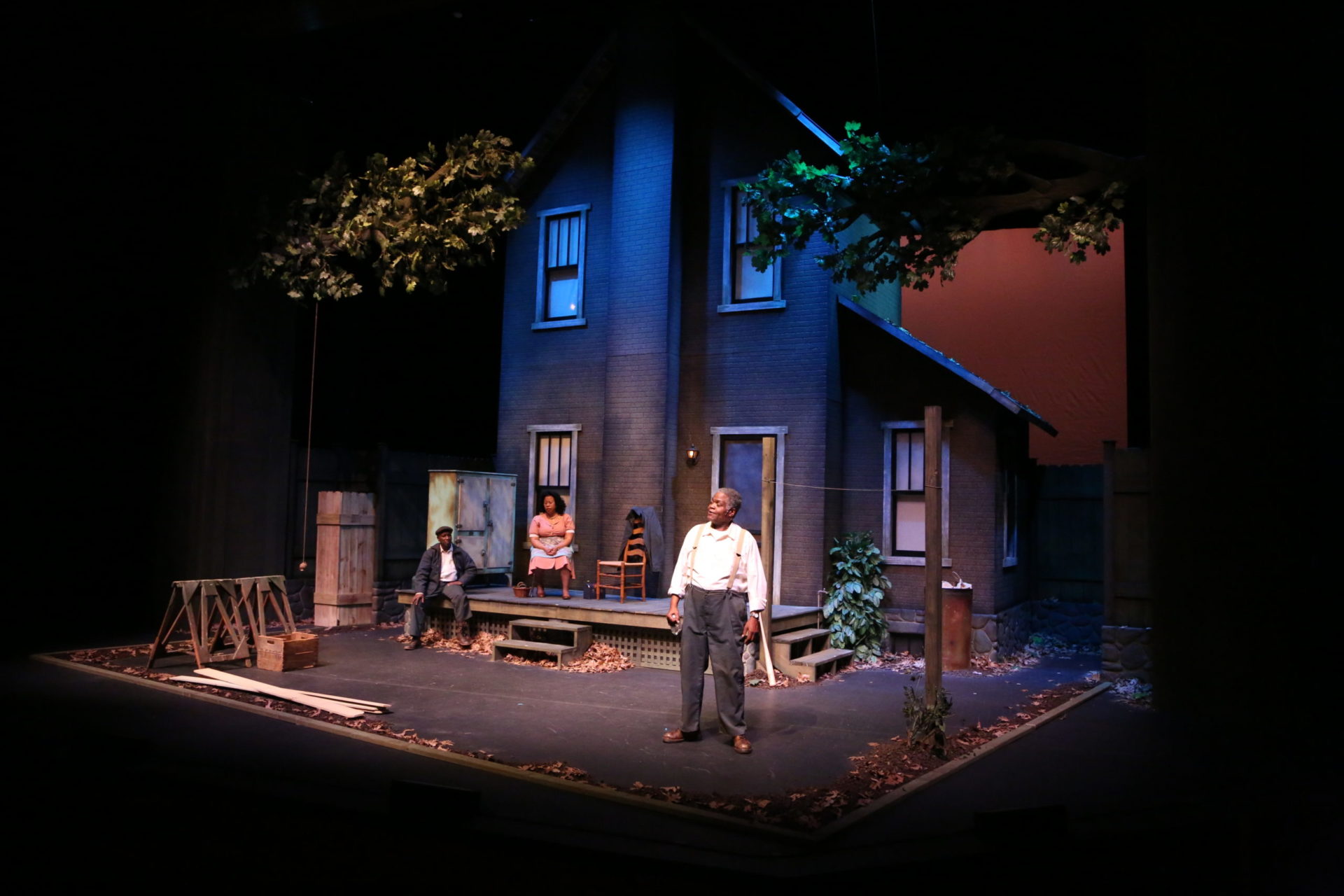
In the post-show Q&A the cast was asked how this play has stayed relevant. Clark Harris, who plays the lead role of Troy Maxson, said that it is still relevant because, even though this 80’s play is set in the 50’s, nothing is different; all the personal problems that characters in the play deal with are problems that people still deal with today.
Jon Royal directed a sincere, human performance. In the Q&A he spoke a little about trying to stay true to the text, which I think he did successfully; no parts ever felt forced, or as if aspects of the play were being pushed into more prominent places to fit some personal agenda. Instead it was clear that the text was respected and valued as much as it could be. In the program he wrote about when he was a child and unable to distinguish between a person living a happy life and one experiencing a happy moment. That ambiguity was alive in his production of this play.
Gary C. Hoff, the scenic designer, created a two-story house with a porch and a yard. It looked very real and after a few minutes I realized that expertly placed leaves were in all the exact places they get blown and remain if they aren’t raked away. That touch was what turned the set from being good to very very good.
I attended this play with my father, who has worked in media production for years, and he was impressed by André Allen’s ability as lighting designer, who managed to capture the look of streetlights shining through tree limbs. All the action took place in the yard, but a few times a character answered the phone inside the house or listened to the radio and their silhouette was projected onto the windows in a fun effect.
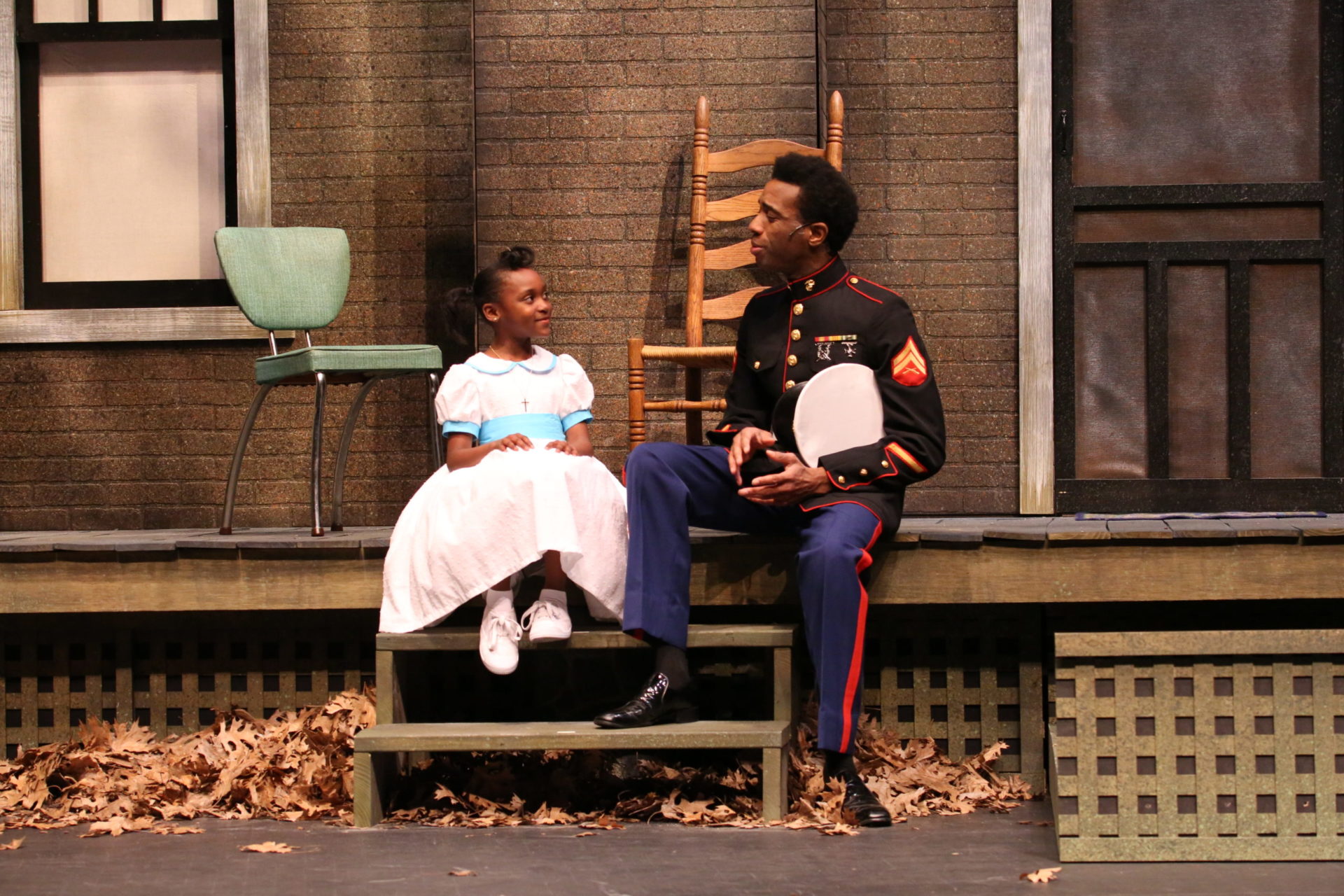
The cast was marvelous. Troy and Rose Maxson, played by Clark Harris and Alicia Haymer, worked together beautifully, their love and their tensions palpable. Clark Harris, playing an extraverted, dominating personality, had lines upon lines and monologues, but he never made them feel lengthy or recited. Playing a sometimes overly-dramatic character without coming across as hammy and unlikeable is difficult, and Harris achieved it. The rest of the cast’s dramatic and comedic timing was spot on, capturing the enthusiastic audience, which laughed and gasped at all the right moments.
Describing part of the Q&A will help show what watching the play was like. Jordan Marie Elizabeth Nixon played the child Raynell Maxson, and when asked about getting into character she said it was easy because she had two things in common with her role: “She is seven, and I’m seven too– for now,” she added meaningfully, with a knowing look at the audience that made everyone laugh. “And second, we’ve both lost somebody close to us.” The audience became unexpectedly serious. Laughter and pain are lifelong companions, and August Wilson and the Nashville Repertory Theatre gave a beautiful performance showcasing both.

